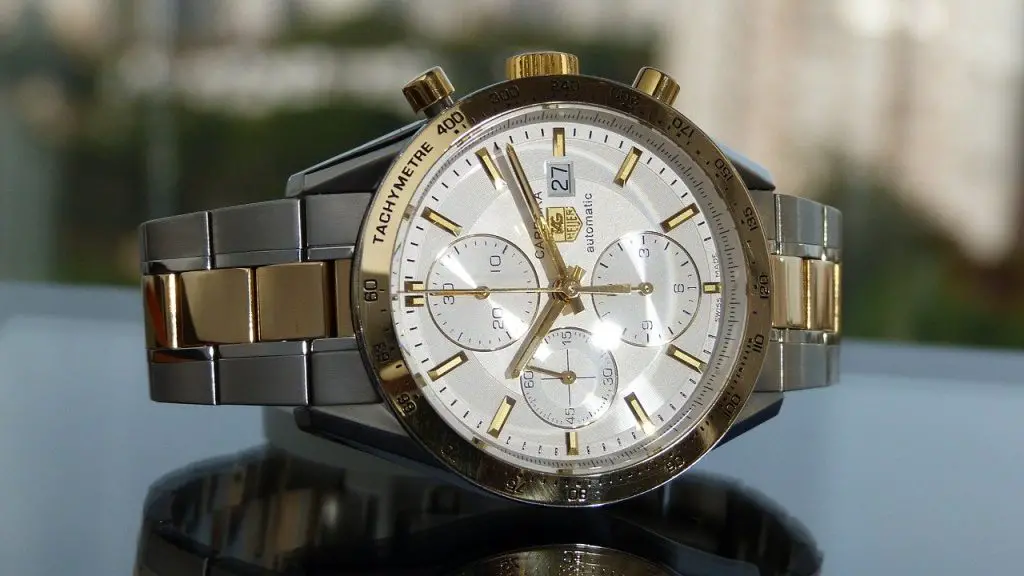
Polishing a watch is something you’ll often hear about, especially when it comes to more expensive watches. But what does polishing a watch actually do?
When you polish a watch, you remove thin layers of the material. Polishing smooths out the watch and takes away scratches. However, polishing a watch also alters its original shape and form.
To put it plainly, polishing your watch is removing a layer off of it. But there’s much more to polishing. How it works and the effects it has on a watch will all be explained in this article!
Table of Contents
What Polishing A Watch Actually Does
Polishing a watch is something that’s somewhat divisive. Some people think that you should polish your watch every now and then, and others are adamantly against it. But why is there such a huge disparity?
When someone polishes a watch, he or she basically removes a very thin layer of the materials. This removal of a thin layer of the materials smooths out the watch and takes away some of the rough edges. This is why some people don’t mind their watches being polished.
However, when this thin layer of materials is removed, the original shape and architecture of the watch will also be altered. The original shape of the watch will be changed.
Of course, a professional can polish a watch with minimal changes made to the original shape, but there will always be a tiny difference. This is also the primary reason why a lot of people don’t want their watches to be polished.
Altering the original shape of the watch is not something you want to happen. Especially if you have a luxury watch with lots of added details. Because when you polish such a watch, those details will be polished as well, causing them to fade away, or worse yet, disappear.
There is also a difference between polishing the face and the case of a watch and polishing the bracelet. When it comes to the case and face, you should be incredibly careful about what you want to do. This is a part of the watch that once altered, cannot be reversed. Any changes made here will be permanent unless you proceed to purchase a brand new watch.
When the case of a watch is polished, the sharp edges and grooves are often polished as well. This takes away from the originality of the watch.
Polishing the bracelet, however, isn’t really that big of a deal. A bracelet can easily be replaced by a new one, so polishing the bracelet isn’t that impactful. The main reason for this is that the case is basically the core of the watch, it’s the expensive part. The bracelet, however, is something that doesn’t hold any of the mechanisms and is just a piece of steel.
Does Polishing A Watch Remove Scratches
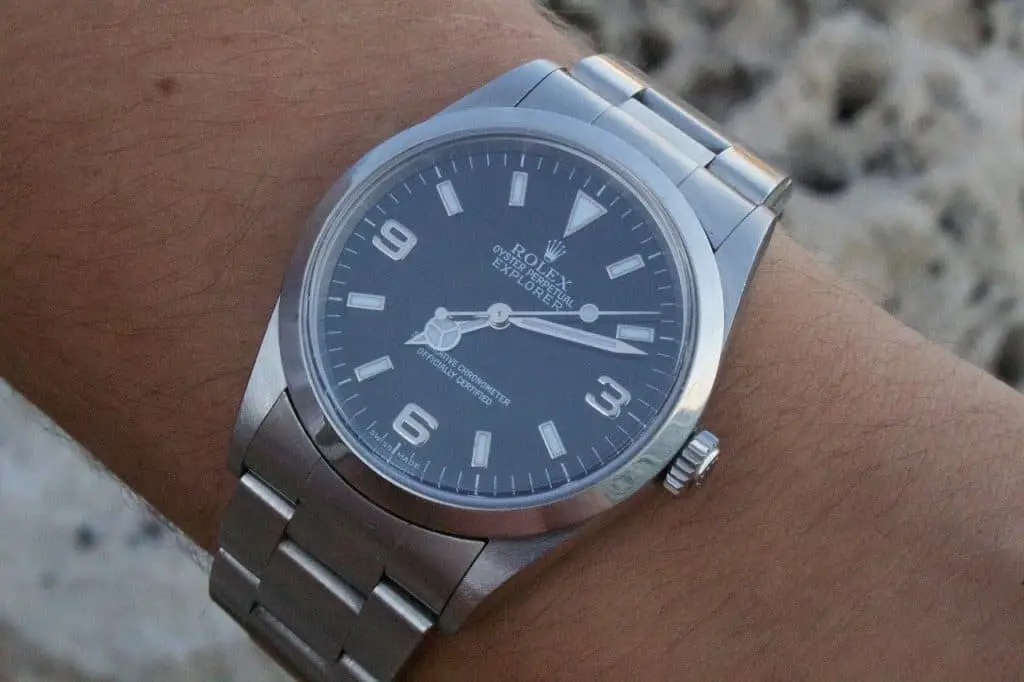
Polishing a watch removes scratches and smooths out the surface. This is done by removing a very thin layer of the materials to even out the scratches. This procedure does alter the original form and shape of the watch.
In theory, polishing your watch will remove the scratches. When a watch is polished, a thin layer of the metal is polished off, which is done to the deepest point of the scratch. This evens out the surface again, ‘removing’ the scratch.
Instead of actually removing the scratch by filling it up, the other parts of the watch that were fine before are now polished off to smooth everything out. Still, the scratch will no longer be visible, essentially removing it.
Removing scratches from your watch, however, is something to be questioned. Every little scratch or dent makes a watch original, and removing scratches is often frowned upon. Especially when done by polishing, as polishing alters the shape and form of the watch.
Polishing your watch does in fact remove scratches, but it also removes an entire layer of your watch. How much of the metal will be polished off depends on the depth of the scratches, but there will always be some of the materials polished off. Whether you want to do that or not is up to you, though!
Should You Polish Your Watch
Whether or not you should polish your watch really comes down to your personal preference. Some people won’t mind polishing their watch, while others are aggressively against it.
Now, if you have a watch, solely for personal use with no intention of ever selling it off, a polish every now and then won’t be so harmful. Every watch can be polished a limited number of times before the actual shape starts to change.
If you have a scratch after wearing the watch for over a year and you’d like to remove that scratch, a one-time polish could be something to consider. Polishing removes a thin layer of the metal, and a one-time polish won’t alter the shape too much.
Wanting to keep your watch looking new and smooth isn’t the worst thing either. Now, I’d be careful if you have an old vintage watch, maybe one that has been passed down to you, as you’re probably better off not polishing such an old timepiece. These watches carry some history with them, and every groove or scratch adds to the appeal.
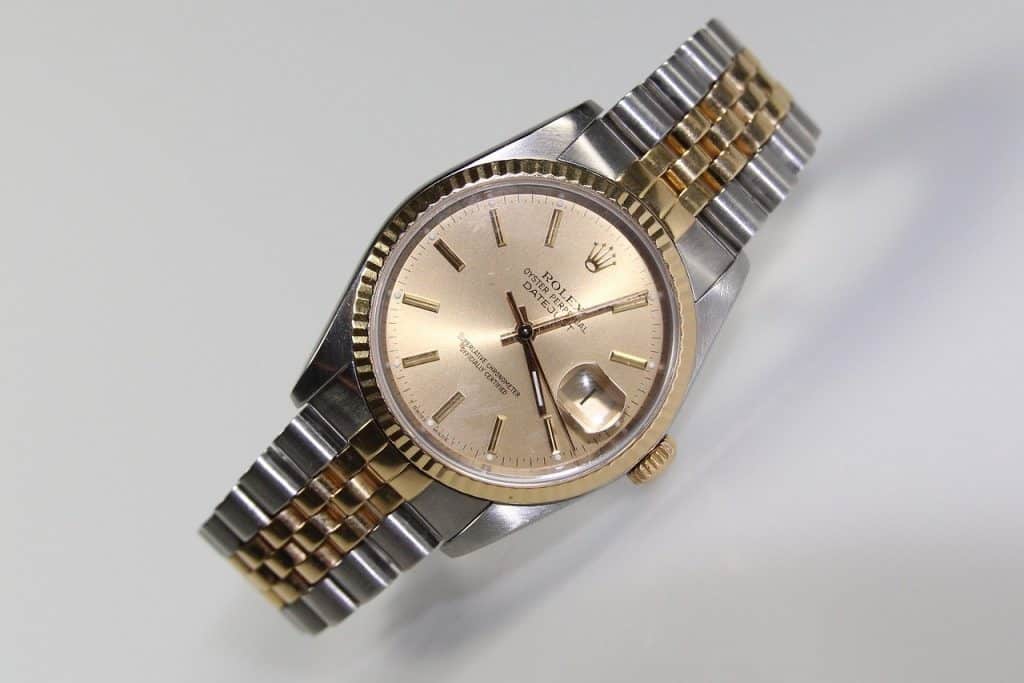
But as far as any relatively new watch goes, a polish once and again wouldn’t be the worst, especially if you want your watch to look smooth and clean. And when you only have a few light scratches, polishing your watch won’t even have that much of an impact, as only an even smaller and thinner layer will be polished off.
The deeper the scratches, the more of the metal will need to be polished off.
Now, keep in mind that this only goes for those that do not plan on selling their watch. If you plan to ever sell your watch, it’s best to not polish it ever.
Polishing your watch is not something that’s appreciated by watch enthusiasts. Many will see it as altering the watch, which takes away its originality and worth. Many watch collectors won’t take a second look at a polished watch, but more on that later!
Will Polishing Devalue Your Watch
We briefly touched on the fact that you should never polish a watch if you intend to sell it at a later point, but let’s take a closer look at exactly why that is.
When you continuously polish a watch, you will diminish its value, as you’ll constantly scrape off materials. Polishing a watch won’t necessarily devalue it, but it will make it less interesting for investors and buyers.
We know that when a watch is polished, thin layers of the materials will be polished away. The metal that is polished away cannot be placed back, so when it comes to the value of the actual materials used to make the watch, you already have a decrease.
However, even more important is the fact that investors no longer see the watch as an original. Every little groove or scratch adds to the history of the watch, and polishing off the history does not do the value any good.
Aside from that, polishing a watch can also remove some of the little dents that were originally there as details. This once again takes away from the originality of the watch.
Of course, the side-effects from polishing a watch, such as the shape and architecture changing, are also responsible for a decrease in value.
If you ever intend to sell a watch, make sure to not polish it. Old vintage watches can easily go for twice the amount of money when they’re unpolished.
Polishing your watch can definitely have a lot of influence on the price that you would be able to sell it for. However, if your watch is purely for personal use, polishing it doesn’t actually devalue it. In fact, having your watch look new and shiny might even be positive in many eyes!
Is Polishing A Watch Bad
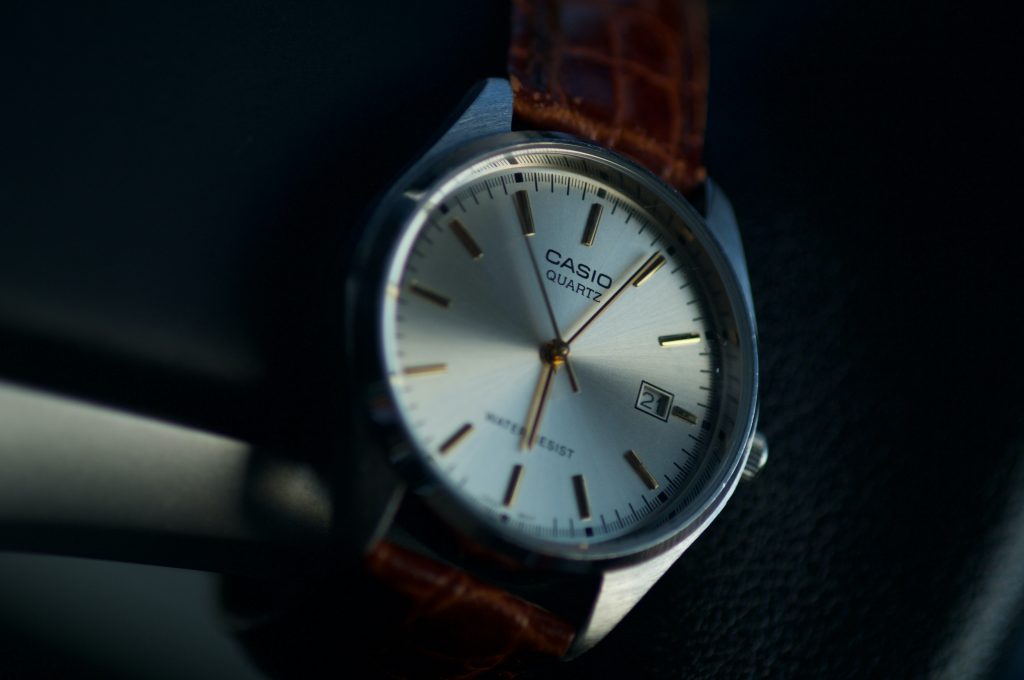
Even though polishing a watch devalues its worth, it isn’t actually bad. Now, this answer will depend on who you’re asking, but anyone that’s not a watch fanatic won’t smirk at you because you polished your watch to make it look fancy again.
Generally, though, if you have your watch polished by an expert, someone who knows what he’s doing, a polish won’t be that bad, especially if it’s just a one and done deal. Removing some scratches and keeping your watch looking like new is not something that’s particularly bad.
On the other hand, if you’ll commonly polish your watch, you can come into the territory where the shape of your watch can actually start to change. Anytime you polish a watch, the shape changes a little bit, but if you’ll have your watch commonly polished, this change in shape becomes much clearer.
A one time polish, or even a polish once a year really won’t make that much of a difference, but once you start to commonly polish your watch, the impact will be much more visible.
And this goes for when you have it done for you professionally. If you decide to polish your watch yourself, you can damage or change the watch even more.
At this point, polishing your watch really can be bad for it. If you don’t know what you’re doing or using the wrong materials, you can do more harm than good.
But a once a year polish, done by an expert, really won’t be that bad. Of course, this does not keep the decrease in value in mind, which is something that will always play a role when talking about polishing a watch.
So yes, polishing your watch can be bad when you often polish it, when it’s done by someone who does not know how to do it, or when you plan to sell it.
But no, polishing a watch won’t be bad if your watch is for personal use only and not polished too often.
Is Polishing The Same As Servicing Your Watch
Polishing is not the same as servicing a watch. A watch service usually includes taking the watch apart, cleaning it, oiling it, as well as polishing it. Polishing is included at a service, but it’s not the same.
Watch maintenance is usually done by servicing a watch. Servicing means that your watch gets a thorough cleaning and oiling, basically making it as if it’s never been used.
This is done by taking the watch apart and carefully cleaning all the parts. This is a very precise job, so this is done by specialists who know what they’re doing. And besides, you would also need to know how to disassemble, and assemble a watch.
After the watch has been disassembled, every part is cleaned and, if need be, replaced. Not all parts are as sturdy, so sometimes, a part has to be replaced in order for the watch to work correctly again.
After cleaning the parts, the watch will be assembled again. During the assembly, any part that needs lubrication will be oiled. The lubrication that was applied the first time the watch was assembled could have dried up (partially), so fresh oil is definitely a must. You don’t want your watch to be rusty and erratic.
From here, the watch is assembled again, and quite often, a polish will follow. If you bring your watch for a polish alone, all the above won’t be done. Instead, you’ll only get your watch polished.
Polishing is also included in a service, but it’s optional. If you don’t want your watch to be polished, which is completely understandable, then you should give a heads-up beforehand.
Nothing worse than bringing in your watch, that you bought as an investment, for a service and finding out it has been polished as well. This will devalue your watch and take away any potential gains you could have made.
Can You Polish Your Watch Yourself
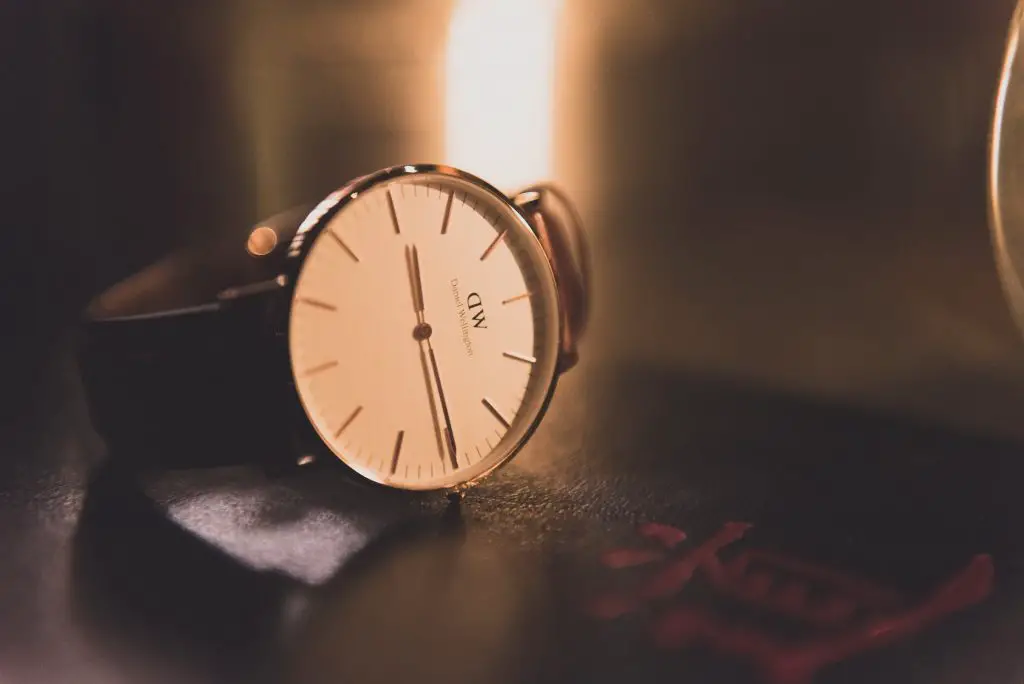
Whereas servicing your watch will definitely need to be done by a professional, polishing can actually be done by yourself. However, please be aware that polishing your watch yourself an be damaging and despite the steps I will lay out, it’s always best to do some research on your exact model and brand.
Step 1 – Get The Right Products
When you’re about to polish a watch yourself, it’s incredibly important that you use the correct products. Luckily, most watches can be polished with some simple products.
Get yourself a 1500-grit sandpaper and run some water over it. This is the basic setup you’ll need to start polishing the bracelet. However, be aware, as this is based on metal watches. If you have a watch that uses more exotic materials or has a gold-tone, this might not be the best approach.
Step 2 – Polish The Bracelet
Now that you have your wet sandpaper, it’s time to start polishing. The best way to go about this is to go link by link.
Carefully rub the links horizontally with your sandpaper and make sure to always apply even pressure. This prevents the watch from deforming. 30 seconds per link should be more than enough, but if there are still scratches after the first 30 seconds, you can rub it a little longer.
The bracelet is the easiest part to polish, as this part doesn’t house any mechanisms. If you mess this up, you can also just easily buy another bracelet.
Step 3 – Polish The Case And Face
After the bracelet has been polished, it’s time to move on to the most difficult part of polishing a watch; the case and the face.
These two parts are much easier to mess up, so please be extremely careful when polishing these parts yourself.
For the case, you can follow the exact same steps as for the bracelet. The case is made with the same materials, so you can use the same method. However, the main difference between the bracelet and the case is that when you mess up the case, there’s no reversing it.
You can’t just buy a new case, as this is the core of the watch. If you mess this part up, you’ll have to get it professionally fixed (even professionals can only do so much here), or you’ll have to get a new watch.
Deforming the case is also much easier than deforming a bracelet. The case has a nice and round shape to it, and even the slightest deformations will be easily noticed.
As for the face, you can use the same 1500-grit sandpaper with some water on it. Again, rub for around 30 seconds with equal pressure. The face of the watch is another part where you can easily mess up. The face has a smooth and even surface, so if you apply uneven pressure, you can see that the surface will now be uneven.
After you’ve polished the face with the 1500-grit sandpaper, polish it a second time with aluminum polish/cleaner. This will smooth things out and gives the watch a shiny and even look.
Step 4 – Wipe The Bracelet, Case, And Face
After you’ve polished your bracelet, case, and face, it’s time to wipe them. For this, you’ll need a polishing cloth designed for fine metals. With the polishing cloth, start rubbing every link in the bracelet for around 2 minutes. This should get rid of any scratches and gives the watch a shiny look.
The same can be done for the case, but when it comes to the face, you should use a microfiber cloth. Use the microfiber cloth to wipe away any of the aluminum polish and rub the face for a little bit. This will give it a beautiful new look.
Dangers Of Polishing Yourself
Now, polishing your watch yourself might sound easy, but it’s even easier to mess this up. Uneven pressure or the wrong materials can easily damage your watch more than you want to.
Aside from damaging your watch, polishing it yourself could also void your warranty. If you try to fix things yourself, many watch companies will no longer see themselves as responsible, thus the warranty will no longer be there for you.
To be sure, always ask your watchmaker if polishing it yourself will void the warranty, and if it does, ask them to polish it for you or ask who they would recommend!
